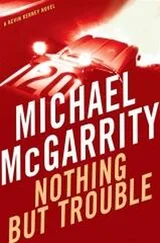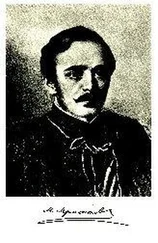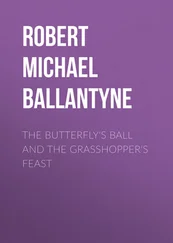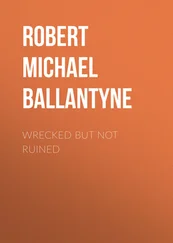Joshua paid attention to Babington’s lessons. He learned how to alter his upright silhouette by tying foliage about his waist, how to move on a wily diagonal while stalking game, how to club a sick or wounded animal to death without exhausting himself or making an ugly mess of his kill, and how to eat raw meat, birds’ eggs, and insects without nausea or qualm. The time in Lolitabu passed quickly.
The night before Joshua was to return to Russell-Tharaka for additional study—textbook and simulator work, with reviews of the paleontological information he had digested last spring and summer—he awoke and went to the door of the tree house. Babington, silhouetted on the edge of the grove, was reciting from Poe:
“Yet if hope has flown away
In a night, or in a day,
In a vision, or in none,
Is it therefore the less gone?
All that we see or seem
Is but a dream within a dream.”
Into the Dream
“ Aninability to distinguish between waking and dreaming may be an index of madness, or it may be a gift.”
I am in the African country of Zarakal taking part in an experiment—a mission, I ought to call it—that would not be possible without my talent as a dreamer. The American physicist Woodrow Kaprow has just strapped me into an apparatus suspended inside a closed vehicle resembling a windowless omnibus.
This large vehicle rests on the outer edge of an ancient stretch of beach about four hundred feet from the southeastern shore of Lake Kiboko, one of several large lakes in East Africa’s Great Rift Valley. We have positioned the omnibus according to Alistair Patrick Blair’s calculations. Blair has cautioned Kaprow that Lake Kiboko in Early Pleistocene times had a more extensive surface area than it does today, and that if the omnibus is parked too close to its twentieth-century shore, I am likely to emerge from my next spirit-traveling episode into several feet of tepid, brackish water. Kiboko , Blair has reminded us, means hippopotamus, but crocodiles also cotton to this great lake, and my life would probably be forfeit even if I did not drown. Therefore we have left ourselves a margin for error.
Outside the sun is rising. It is July, and very hot. Inside, however, a pair of interlocking rotary blades have begun to spin just above my outstretched body; the breeze they make evaporates the sweat from my forehead. Kaprow hunches inside a bell-shaped glass booth punching buttons and flipping switches. I can see him if I turn my head, but he has asked me to lie completely still, close my eyes, and concentrate on the recorded human heartbeat drumming in my earphones. The hypnagogic rhythms of this sound will soothe me toward slumber and induce the kind of dreaming necessary to shift my body into the Early Pleistocene.
“You’re drifting,” Kaprow intones. “You’re drifting, Joshua. Drifting…”
I am at the eye of a compact hurricane, the toroidal field generated by the rotors. Waking and dreaming begin to interthread. Although my eyes are closed, my inward vision brings me images that alternate between a primeval landscape of gazelles and the twentieth-century interior of the omnibus. Pretty soon these images are coterminous, and I am in two places at once. In the throes of dream I drift for nearly two thousand millennia.
At last the rhythm of the heartbeat ceases, and I open my eyes to find that the rotors above my scaffold have almost stopped turning. The booth in which Kaprow has monitored my dropback appears to be empty; its transparent hood has taken on a decidedly smoky cast. The trouble of course is that Kaprow has remained in humanity’s consensus present whereas I have retreated to only Ngai knows precisely what year. (For Ngai presides over the Kikembu spirit world.) The inside of the omnibus exists at a set of temporal coordinates different from those of the remainder of the machine, and my dreaming has been instrumental in affecting this dislocation. Glancing about, bewildered, I apply a tentative forward pressure to the control beside my hand.
This control maneuvers my scaffold up and down on the pneumatic struts attaching it to the ceiling.
Obediently, then, the scaffold begins to drop through a bay in the floor of the vehicle. The rotors that have half-encircled me remain where they are, like a bird cage that someone has cracked open on the edge of my platform. I am being hatched into a “simulacrum” of our planet’s prehistory.
Blair and Kaprow have planned my exit wisely, for when I emerge from the belly of the omnibus I will not descend into a solid mass of rock or find myself forty feet above the surface with no easy way down.
No indeed. The ground is only a body length below me. For the present, though, I gaze upward into a column of space furnished with the arcane equipment that has helped me make this transfer. The rest of the omnibus—the tires, the chassis, the body—is utterly invisible, for it exists in material fact only in the final fifth of the twentieth century. Briefings and simulations have not prepared me for the weirdness of this effect, and I peer into this hovering hole in the Pleistocene sky like a fretful Alice regretting her introduction to Wonderland.
* * *
Although I missed the lake, what sort of splash did I make in that ancient timescape?
Initially, not much. Had there been any sort of fashion-conscious creature there to observe my arrival, though, it would have had to regard me as the Beau Brummell of hominids. Although I was still in harness (on the apparatus that Kaprow called the Backstep Scaffold), I had brought with me not only the clothes on my back but several changes and a small cornucopia of survival items. The point of all this gear was to keep me alive for the duration of my mission, which was supposed to last anywhere from two weeks to a month.
Beyond the bush jacket, bush shorts, and chukkas in which I arrived, here is what I had with me in the way of clothing: three pairs of cotton jockey shorts (Fruit of the Loom); three white, V-necked, cotton undershirts (Hanes); three pairs of white, calf-length tube socks (Gold Cup); and a red bandanna that my sister Anna had given me as a talisman on my eighth birthday. My bush jacket and shorts had come from a safari outfitter in Marakoi, but my chukkas were from the Eddie Bauer firm of Seattle, Washington, U.S.A. They had rubber soles and heels, cushioned scree-guards at the ankles, and uppers of rugged Maple Cuddy leather. Even if they were not exactly designed for East African landscapes and hot weather, I liked the way they felt.
In the way of necessary in-the-field gear I had brought the following: a canteen (Army surplus, government issue); a Swiss Army pocketknife with a lanyard chain (L.L. Bean, Inc., Freeport, Maine); an Eddie Bauer combination stove and survival kit; a shaving bag with a Gillette Track-II razor, a small can of Colgate shaving cream (lime scented), and a collapsible mirror; a first-aid kit with bandages, malaria pills, water-purification tablets, and a modest contingency supply of latex prophylactics; a penlight with a handful of additional batteries (Duracell); a.45-caliber automatic pistol (Colt, government issue); a canvas bandolier with two hundred rounds of ammunition (Army surplus, government issue); a leather holster and belt (Cheyenne Leatherworx; Manitou Springs, Colorado); a combination reduced-print Bible and guide to Pleistocene ecology (the American Geographic Foundation in conjunction with the Gideons); a magnifying glass; thirty feet of heavy-duty nylon rope; and an expensive intertemporal communicator (KaprowKorn Instruments, Ltd.) that almost immediately failed me. Much of this equipment I wore, stowed in my pockets, or carried in a nylon pack strapped to my chest. Once down from the Backstep Scaffold, I would shift this pack to my shoulders.
Читать дальше



![Ally Carter - [Gallagher Girls 01] I'd Tell You I Love You But Then I'd Have to Kill You](/books/262179/ally-carter-gallagher-girls-01-i-d-tell-you-i-lo-thumb.webp)








